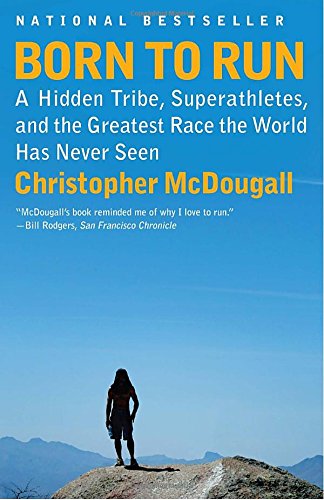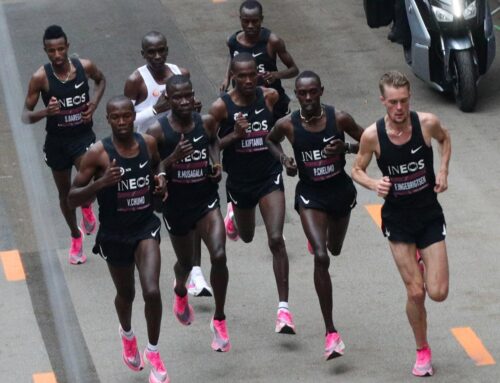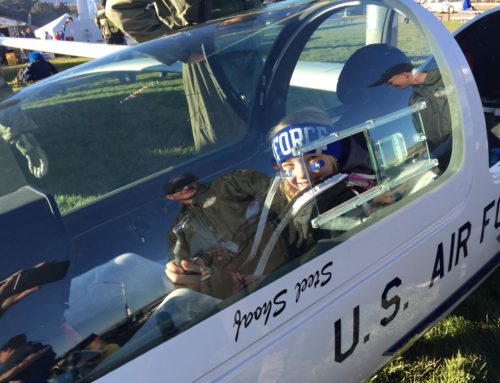Any equestrian knows that the following excerpt “that a human’s stride is longer than a horse’s stride” is an exaggerated claim by the author who loves urnning, but I loved the book, Born to Run, anyway, as it well written and has great tips on diet and science which are fascinating for all athletes, not just runners. But ask any horse person, and they will tell you that a horse has a 12-foot stride at a hand canter and scientists have shown, for instance, that Secretariat (24.5 ft) had a foot shorter average stride length than American Pharoah (25.23 ft) at the gallop, but was able to run faster. When a human runs, if he has a 12-foot stride, let alone a 25-foot one, I’d love to see that human. I think he was referring to the length of stride of a horse’s trot, which is about 4-4.5 feet. When exercise physiologist, Jack Daniels, analyzed human runners’ stride lengths at the 1984 Olympics, he found that women distance runners had an average stride length of 58 inches, while women sprinters averaged strides of 80 inches. For men, the average stride was 74 inches for distance runners and 93 inches for sprinters. So he got it right if that is what he meant. Anyway, it is a great book, and be sure and try the pinole recipe.
In BORN TO RUN: A Hidden Tribe, Superathletes, and the Greatest Race the World Has Never Seen Christopher McDougall writes:
Together, Dr. Bramble and David Carrier began putting their World’s Greatest Marathoner model to the test. Soon, evidence was turning up all over, even in places they weren’t looking. One of their first big discoveries came by accident when David took a horse for a job. “We wanted to videotape the horse to see how its gait coordinated with its breathing,” Dr. Bramble says. “We needed someone to keep the gear from getting tangled, so David ran alongside it.” When they played back the tape, something seemed strange, although Bramble couldn’t figure out what it was. He had to rewind a few times before it hit him: even though David and the horse were moving at the same speed, David’s legs were moving more slowly.
“It was astonishing,” Dr.Bramble explains. “Even though the horse has long legs and four of them, David had a longer stride.” David was in great shape for a scientist, but as a medium-height, medium-weight, middle-of-the-pack runner, he was perfectly average. That left only one explanation: as bizarre as it may seem, the average human has a longer stride than a horse. The horse looks like it is taking giant lunges forward, but its hooves swing back before touching the ground. The result: even though biomechanically smooth human runners have short strides, they still cover more distance per step than a horse, making them more efficient. With equal amounts of gas in the tank, in other words, a human can theoretically run farther than a horse.
But why settle for theory when you can put it to the test? Every October, a few dozen runners and riders face off in the 50 mile Man Against Horse Race in Prescott, Arizona. In 1999, a local runner named Paul Bonnet passed the lead horses on the steep climb up Mingus Mountain and never saw them again till after he’d crossed the finish line. The following year, Dennis Poolheco began a remarkable streak: he beat every man, woman, and steed for the next six years, until Paul Bonnet wrested the title back in 2006. It would take eight years before a horse finally caught up with those two and won again.
And if you want to run in sandals like the Tarahumara Indians from the Copper Canyons region of northwestern Mexico, that are studied in Born to Run, try Shamma sandals, which is the white man’s version, using modern materials but a very similar style and purpose. p.s. We don’t recommend running horses barefoot for polo, jumping or hunting though, shoes provide stability, support and reduce injury (as they probably do in people as well, but it’s your choice to run free if you want to.)






